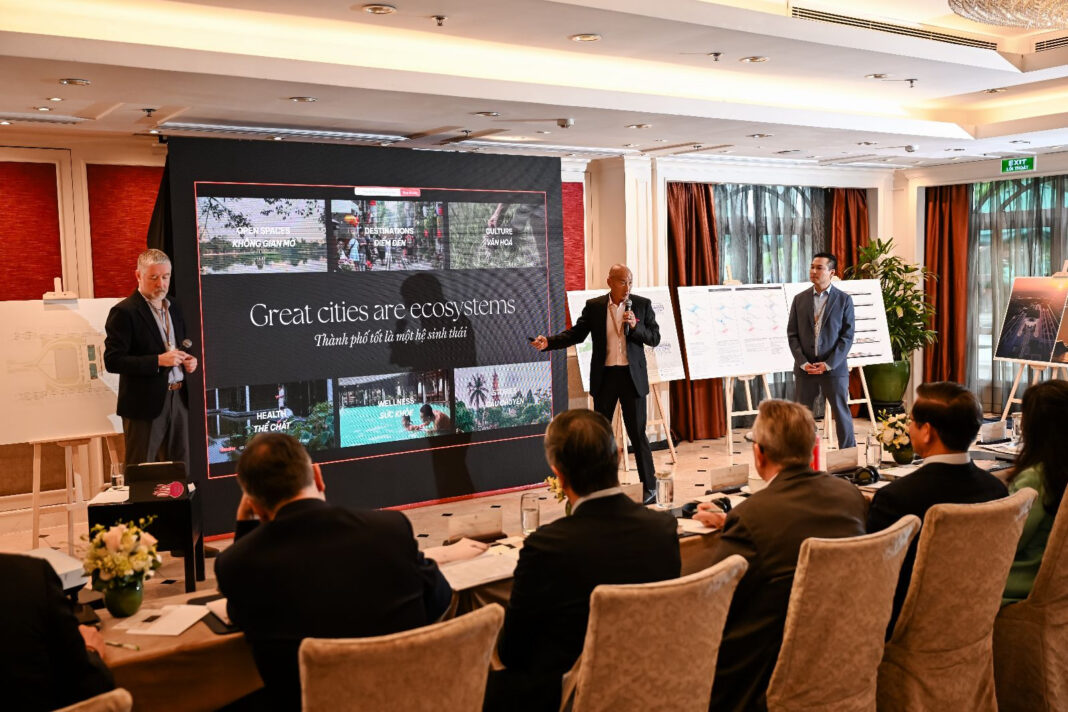Exploring the Architectural Design Competition for Gia Binh International Airport Passenger Terminal
Organized by Masterise Group, the Architectural Design Competition for the Gia Binh International Airport Passenger Terminal has gathered an impressive lineup of talent, featuring three of the globe’s most distinguished architectural firms: Gensler (USA), Skidmore, Owings & Merrill (SOM) (USA), and Nikken Sekkei (Japan). This initiative is pivotal as Vietnam embarks on transforming into a strategic national infrastructure landscape.
A Landmark Event in Vietnam’s Development Journey
On November 8, 2025, the competition culminated in a presentation round held at the iconic Sofitel Legend Metropole in Hanoi. This event marked a significant step in the culmination of ideas from some of the most celebrated minds in modern airport design. These firms are already pioneers in their field, having designed renowned Skytrax 5-star airports, such as Incheon in South Korea and Changi in Singapore. Their participation promises a groundbreaking architectural vision for Vietnam’s new landmark.
Methodical Approach to Choosing a Design
The competition followed a rigorous international design process aimed at identifying the optimal architectural solution for the Gia Binh International Airport Passenger Terminal. This structured approach included live presentations, independent evaluations, secret voting, and transparent result announcements. Importantly, the process adhered completely to Vietnamese legal regulations and international standards governing architecture, planning, and construction.
Evaluating Groundbreaking Concepts
An esteemed international Jury Panel scrutinized the final presentations, composed of leading experts in architecture, planning, and aviation. The panel featured notable figures such as Professor Richard De Neufville from MIT, acclaimed architect Moshe Safdie, and other industry luminaries from Zaha Hadid Architects and Jacobs. Their collective expertise ensured stringent evaluation standards and adherence to best practices.
Integrating Vietnamese Culture with Global Standards
Each design concept reflected deep research into the local context while aligning with Vietnam’s aviation sector development. The competition set out to create a “smart – green – sustainable” airport model, emphasizing passenger experience and the harmonious integration of Vietnamese cultural elements. Every firm presented distinct visions for the terminal, capturing the essence of the Vietnamese identity while ensuring high operational efficiency.
Innovative Sustainability Ideas
Sustainability emerged as a key theme across the designers’ proposals. Ideas such as rainwater harvesting, natural ventilation systems, and the utilization of low-carbon materials showcased the firms’ commitment to environmentally conscious design. The integration of features like rooftop solar panels signals a forward-thinking approach that champions both innovation and sustainability.
Design Inspired by Nature
One standout concept was shared by Jordan Pierce, a Senior Associate Principal at SOM, who described their vision as the “Terminal of the Water Gardens.” Inspired by Vietnam’s beautiful landscapes, the design aims to create a unique airport experience where each passenger journey is intertwined with elements of water, providing a distinct and resonant connection to the country’s geography.
Comprehensive Evaluation Criteria
The Jury Panel assessed designs against ten comprehensive criteria, including technical feasibility, sustainability, creativity, cultural coherence, and aesthetic appeal. Each proposal was subject to objective evaluation, underscoring the competition’s commitment to transparency in decision-making.
Insights from the Jury
Laurence Liauw, a Vice Chairman of the Jury, emphasized the significance of this moment for Hanoi’s aviation industry, noting the need for an expansion to accommodate rapid economic and population growth. He highlighted the new airport’s potential to enhance Vietnam’s global tourism footprint and bolster the aviation business.
Gia Binh: A Future Economic Hub
Positioned as the northern gateway airport and regional hub for passengers, cargo, and maintenance, repair, and operations (MRO) services, the Gia Binh International Airport is anticipated to drive economic growth in Hanoi and surrounding regions. Designed to cater to increasing passenger numbers—projecting 30 million passengers and 1.6 million tonnes of cargo annually by 2030—the new airport aims to rival established regional hubs.
Striving for Excellence
The airport’s ambition doesn’t stop at capacity. It is designed to meet ICAO 4F technical standards and Skytrax 5-Star service benchmarks, ensuring that it not only serves but also excels on the international stage. With a commitment to sustainable, smart, and green development, the project embodies advanced operational standards integrated with user experience priorities.
A Commitment to Future-Ready Infrastructure
The Architectural Design Competition for the Gia Binh International Airport Passenger Terminal is a testament to Masterise Group’s dedication to leveraging global expertise and innovation. By aligning with top architectural talents, Vietnam is strategically positioning itself for a prosperous future in aviation, industrial growth, and international connectivity.
This competition marks not just a milestone in infrastructure development but a bold step towards achieving Vietnam’s ambitions on the world stage. The outcomes from this innovative endeavor are sure to leave a lasting impact on both the nation’s aviation landscape and its cultural identity.



